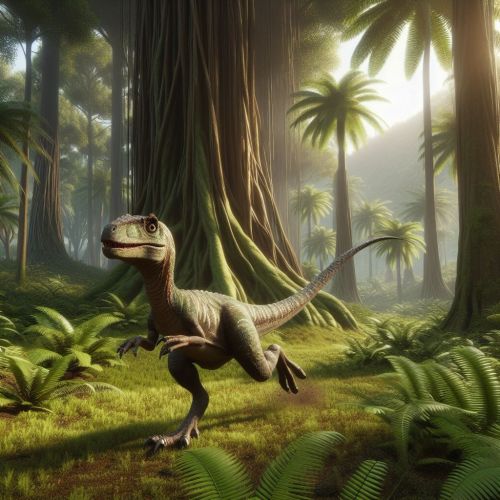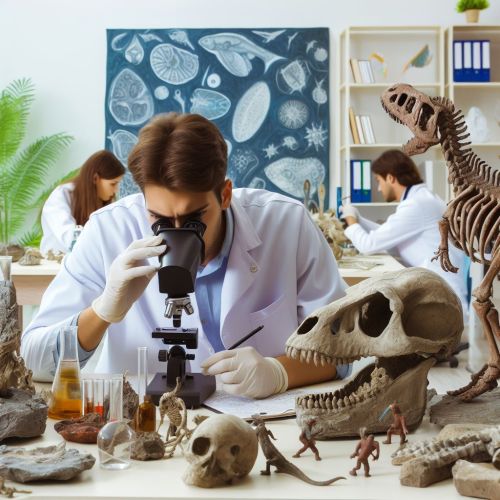
The first dinosaurs of the planet
The first dinosaurs were quite modest in size and moved on four limbs.
Dinosaurs are a superorder of sauropods that appeared about 251 million years ago. Dinosaurs were the dominant group of terrestrial vertebrates in the Mesozoic era (Triassic, Jurassic and Cretaceous periods) until the mass extinction 65 million years ago.
More than 1000 species have been described. Remains have been found on all modern continents. They are divided into 2 rows:
- Ornithischia
- lizards (Saurischia) – were the ancestors of birds.
The first dinosaurs were amphibians
Labyrinthodonts are ancient amphibians that were among the first to adapt to life on land and existed alongside dinosaurs for more than 40 million years.
They belong to the class of amphibians. Length up to 5 m, weight up to 1000 kg.
This amphibian got its name thanks to the special folded, labyrinth-like structure of the teeth. Outwardly, labyrinthodonts resembled something between crocodiles and salamanders. The animal combined features of fish, reptiles and amphibians.
On the sides of the body, the labyrinthodont (like a fish) had a lateral line that caught the slightest fluctuations in the water. He breathed with the help of internal gills and primitive lungs. Sukhodolom moved slowly and clumsily. Unlike dinosaurs, the legs of labyrinthodonts are not located under the body, but on the side.

Coelophysis.
Coelophysis is one of the first dinosaurs. A series of lizard pelvises, length about 3 m, weight about 30 kg. Unlike its predecessors, its legs were located under the body, as in mammals, the coelophysis moved on two legs.
In 1947, on the territory of the USA, paleontologists found a large burial of these dinosaurs, most likely, their bodies were brought here by a stream of water, and the discovered dinosaurs became victims of the elements.
Although the existence of cellophystics has been known since 1880, this discovery helped make many discoveries. For example, as a result of the study of fossilized remains, it was definitely established that these dinosaurs were cannibals (they ate representatives of their own species).
it was dangerous to stand in the way of such a well-armed predator, because its jaws had teeth as sharp as razor blades. Everything that moved became their prey.
Presumably, coelophysis hunted in packs.
Plateosaurus.
Plateosaurus is one of the oldest representatives of lizards. The largest dinosaur of the Triassic. Body length up to 10 m, weight up to 1 ton.
Archaeologists discovered more than 100 skeletons of these lizards. Some of them are well preserved.
The largest number of fossil remains of plateosaurs were found on the territory of modern Germany, for which this dinosaur received a second name – “Swabian dragon”.
The plateosaurus ate plant food, as evidenced by its teeth, which are well adapted for grinding coarse food.
Plateosaurus, like modern birds, had to swallow pebbles that helped the stomach grind coarse plant fibers.

Scientists discovered groups of remains of plateosaurs. This allowed us to assume that they kept in herds or from time to time made joint migrations to nesting places or to new pastures.
Plateosaurs moved on four limbs, but if necessary, they could stand on their hind legs. The front limbs were adapted not only for walking, but also for grasping.
Eoraptor.
Eoraptor is a representative of lizard-pelvis dinosaurs. Length up to 1 m, weight up to 24 kg. “Eoraptor” is translated from Greek as “pre-dawn robber”. The name very accurately describes the habits and lifestyle of this dinosaur.
He lived on the territory of South America.
Eoraptors belong to the first dinosaurs, but it is wrong to consider them the ancestors of all dinosaurs. Studying the fossil remains of eoraptors, scientists came to the conclusion that dinosaurs came from predatory bipedal reptiles.
A predator whose menu consisted of smaller reptiles and insects.
Its jaws were armed with sharp teeth: some of them are the same as those of predatory theropods (slightly bent and very sharp), the rest are flat, with uneven edges, like those of prouropods (the first large herbivorous dinosaurs).
The front limbs are shorter than the hind limbs and were intended for grabbing and holding prey.